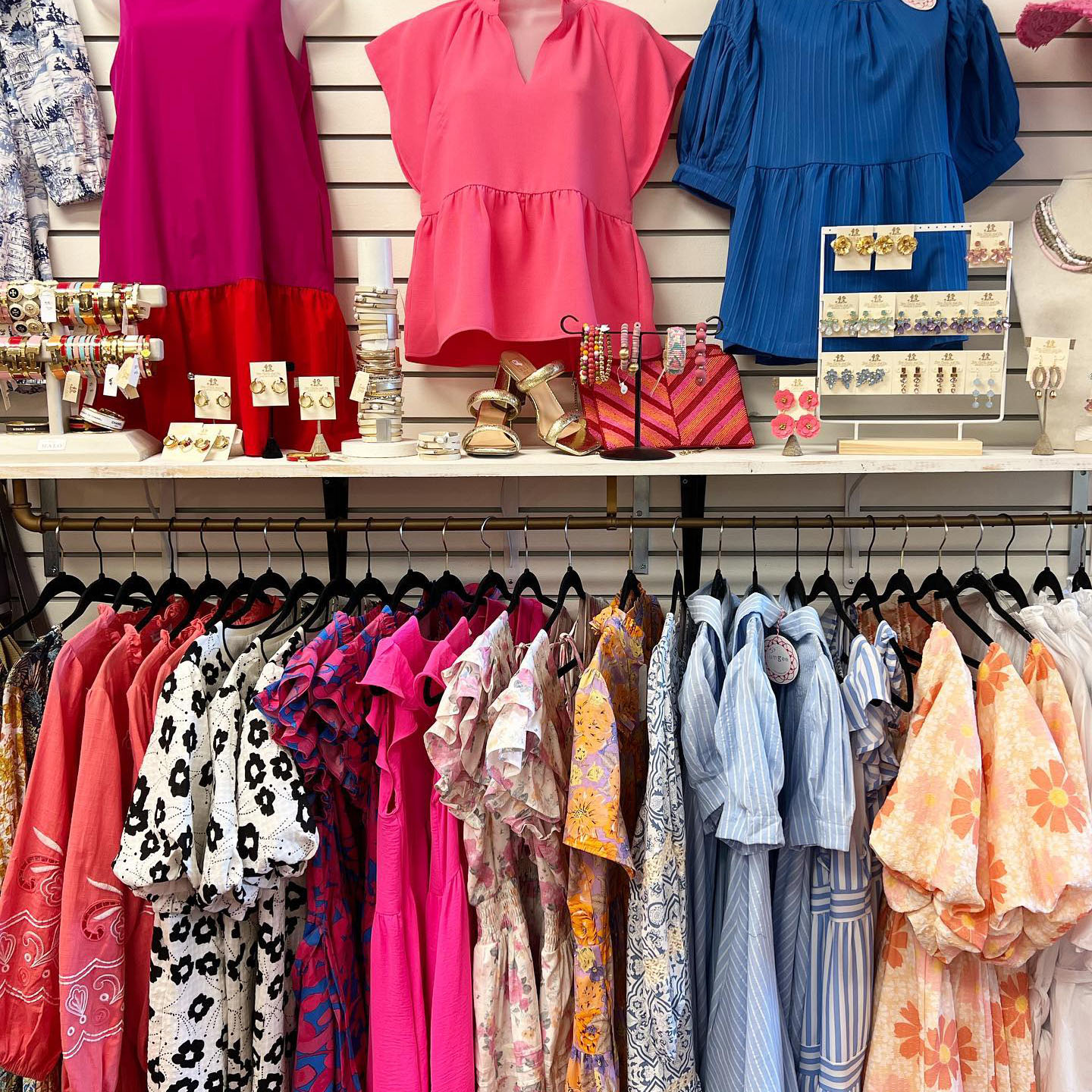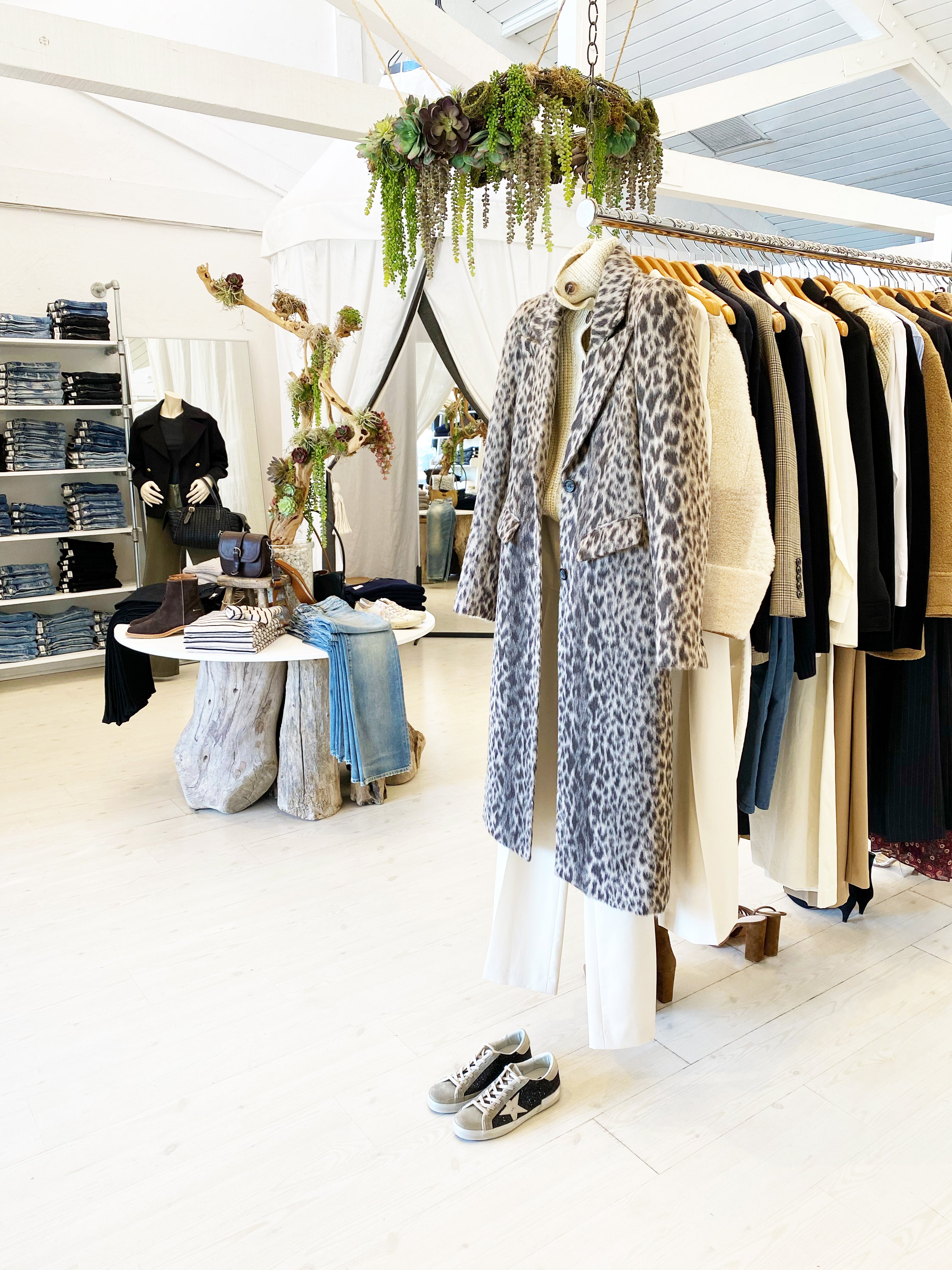Lasting Fashion: How Eco-Friendly Clothes Is Forming the Future of Design
As the style market faces increasing analysis over its ecological effect, the rise of lasting style provides a promising choice that lines up style with eco-friendly obligation. boutique fashion. How does this activity genuinely influence the future trajectory of style, and what difficulties lie in advance in its extensive fostering?
Ingenious Sustainable Products
As the fashion business comes to grips with its environmental impact, innovative sustainable materials have emerged as a vital solution for lowering environmental impacts. Among one of the most appealing products are those obtained from all-natural, sustainable sources, such as natural cotton, hemp, and bamboo. These materials not just reduce reliance on nonrenewable fuel sources however also lessen hazardous chemical usage and water usage. Organic cotton, for example, uses dramatically less water than traditional cotton and eliminates the requirement for poisonous chemicals, thereby protecting dirt health and biodiversity.
Along with plant-based products, innovations in biofabrication have actually led to the development of lab-grown textiles. Mycelium leather, stemmed from mushroom roots, presents a versatile and naturally degradable alternative to animal leather. Its production results in substantially reduced carbon exhausts and water usage, making it an extra lasting choice for designer seeking to straighten with environment-friendly techniques.
Recycled materials are additionally gaining traction, with polyester made from recycled plastic containers representing a significant innovation. This innovation not just draws away plastic waste from seas and landfills but additionally minimizes power intake contrasted to creating virgin polyester. Together, these products underscore the possibility for a much more sustainable fashion sector, paving the means for ecologically conscious layout and manufacturing.
Eco-Conscious Production
Building on the advancements in sustainable products, the style industry is likewise re-evaluating its production processes to further decrease environmental effect. Secret approaches consist of decreasing water intake, lowering carbon discharges, and removing unsafe chemicals.
Another essential element is the reduction of poisonous chemicals typically utilized in dyeing and finishing textiles. Eco-conscious manufacturers are moving towards plant-based dyes and waterless dyeing technologies, which not just guard local environments however likewise enhance employee security. Developments like digital printing lower fabric waste and power usage, using a cleaner option to typical methods.
Furthermore, transparency and traceability have actually come to be extremely important. With the advancement of blockchain modern technology, business can now give detailed insights right into their supply chains, guaranteeing eco pleasant and moral methods at each step. This transparency constructs customer count on and encourages brand names to maintain high sustainability standards. As the demand for eco-conscious items grows, suppliers are urged to introduce, ensuring that the future of fashion is both lasting and stylish.
The Increase of Upcycling
Upcycling, a transformative technique in lasting fashion, involves creatively repurposing discarded materials right into new, premium products. This innovative strategy not just decreases waste however likewise reduces the need for resources, thereby minimizing the environmental influence of clothing production. By reimagining and reconstructing existing products, designers and style brand names are able to infuse originality into their collections while advertising environmental responsibility.

In addition, the upcycling activity has actually empowered tiny services and independent designers, that often lead in development as a result of their agility and creativity. By taking advantage of the bountiful schedule of extra products, these entities add to a circular economic climate, showing that fashion can be both lasting and fashionable. With upcycling, the sector takes considerable strides towards a more conscious and responsible future.
Thrift Society's Influence
The burgeoning thrift society considerably improves the landscape of lasting style, emphasizing the relevance of mindful intake. This cultural change motivates customers to welcome pre-owned clothes, consequently minimizing the demand for new garment manufacturing and lessening ecological influence. Thrift buying not just extends the lifecycle of clothing yet likewise reduces the carbon footprint associated with production, carrying, and getting rid of garments.
A vital element of second hand society is its democratization of fashion. By using a wide variety of designs from numerous eras at affordable Full Report rates, second hand stores make style easily accessible to a broader target market. This ease of access cultivates a feeling of individuality and imagination, as consumers mix and match special pieces to curate tailored wardrobes without contributing to the rapid style cycle.
Moreover, second hand society advertises circularity in style, straightening with the concepts of a round economic climate. By recirculating garments, the cycle of waste is interfered with, and resources are preserved. This technique sustains a shift from a straight "take-make-dispose" design to a more sustainable framework. As more designers and customers accept thrift culture, the style sector is forced to adjust, incorporating lasting methods to meet the expanding need for eco-conscious choices.

Future Trends in Fashion
Fashion's advancement is increasingly shaped by technical developments and sustainability-driven efforts. As consumers come to be a lot more environmentally conscious, the sector is responding with groundbreaking advancements that redefine the future of style. One noticeable pattern is the increase of digital style, where digital garments can be worn in augmented truth atmospheres, substantially lowering material waste. This change not only deals with the digital-savvy consumer yet additionally decreases the environmental footprint traditionally related to garment manufacturing.
Moreover, the integration of blockchain innovation supplies new possibilities in transparency and traceability, permitting customers to validate the sustainability qualifications of their apparel. boutique fashion. This guarantees responsibility in supply chains and advertises honest sourcing techniques. 3D printing is yet one more advancement that promises to change manufacturing procedures by making it possible for Get More Info on-demand production, therefore decreasing excess supply and waste
As these technologies develop, they are poised to transform the fashion landscape, combining style with sustainability. The future of style, as a result, exists in a seamless mix of innovation, advancement, and environmental obligation.
Final Thought
The makeover of the apparel industry via sustainable techniques shows a pivotal shift in the direction of environmental liability. The assimilation of cutting-edge products, eco-conscious production techniques, and the embracement of upcycling and second hand society highlights a commitment to minimizing environmental footprints. As these methods a knockout post obtain energy, they redefine the sector's narrative by prioritizing honest and sustainable selections. This development not just straightens fashion with ecological sustainability yet likewise establishes a precedent for future patterns concentrated on duty and advancement.
As the fashion market faces enhancing examination over its ecological impact, the surge of lasting style offers an appealing alternative that aligns style with eco-friendly duty.As the fashion industry grapples with its ecological influence, innovative lasting products have actually emerged as a vital option for minimizing eco-friendly impacts. Together, these products highlight the potential for a more lasting fashion industry, paving the way for environmentally mindful layout and production.
Building on the developments in sustainable materials, the fashion market is also re-evaluating its manufacturing processes to further minimize environmental influence. boutique fashion.Upcycling, a transformative method in lasting style, involves creatively repurposing thrown out products right into new, top quality items